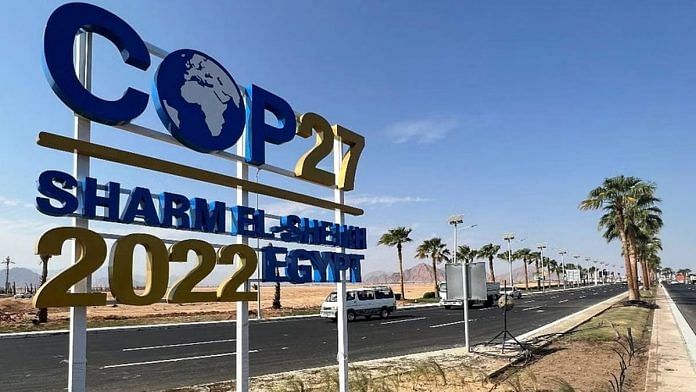Sharm El-Sheikh: Highly polluting emerging economies including China and India should pay into a climate compensation fund to help countries rebuild after climate change-driven disasters, the prime minister of island nation Antigua and Barbuda said on Tuesday.
The comments marked the first time the two nations have been lumped into the list of major emitters that island states say should be held to account for damage already being wrought by global warming.
Prime Minister Gaston Browne, speaking on behalf of the Association of Small Island States (AOSIS) negotiating bloc,told reporters the world’s first- and third-biggest greenhouse gas emitters – though still emerging economies – have aresponsibility to pay into a fund.
Delegates at the conference agreed to put the topic of loss and damage onto the formal agenda for the first time in the history of international climate negotiations.
“We all know that the People’s Republic of China, India – they’re major polluters, and the polluter must pay,” Brownesaid. “I don’t think that there’s any free pass for any country and I don’t say this with any acrimony.”
In U.N. climate talks, the phrase “loss and damage” refers to costs already being incurred from climate-fuelled weatherextremes or impacts, like rising sea levels.
To date, climate vulnerable countries have called on historical emitters like the United States, United Kingdom andthe EU to pay climate reparations. China itself has previously supported the creation of a lossand damage fund but has not said it should pay into it. The EU and United States have said that China, the world’s biggestgreenhouse gas emitter, should pay.
India, though a top emitter, has per capita emissions that are significantly lower than the world average.
AOSIS wants a full commitment to launch a multibillion dollar fund by 2024.
Egypt’s lead climate negotiator Mohamed Nasr told Reuters that the goal for the COP27 negotiations was to get some clarity on the way forward for loss and damage, but that there was still a wide range of views.
“Now we have a starting point, so it is more streamlined and more focused and hopefully by the end of the two weeks we’ll have something that would identify the road map, the milestones to deliver,” he said.
Over the coming year the goal would be to identify a mechanism for delivering loss and damage funding.
“We’ll be looking at the different options. Is it a facility? Is it a new fund? Is it the existing funds? I meanthere are a lot of options,” he said. “What we heard from many countries is that they want to keep their options open.”
Another AOSIS negotiator, Deputy Environment Minister of International Cooperation Milagros De Camps, said from theperspective of island nations like hers that face more frequent and powerful natural disasters like hurricanes and cyclones the need for a new dedicated compensation fund is clear.
“We need specific fund fit for purpose… a separate operating entity,” she told reporters. “This is a matter ofsurvival for small island developing states.”
For daily comprehensive coverage on COP27 in your inbox, sign up for the Reuters Sustainable Switch newsletter here
(Reporting by Valerie Volcovici; Editing by Lisa Shumaker)
Disclaimer: This report is auto generated from the Reuters news service. ThePrint holds no responsibilty for its content.
Also read: Loss & damage funding on COP 27’s official agenda but with caveats






